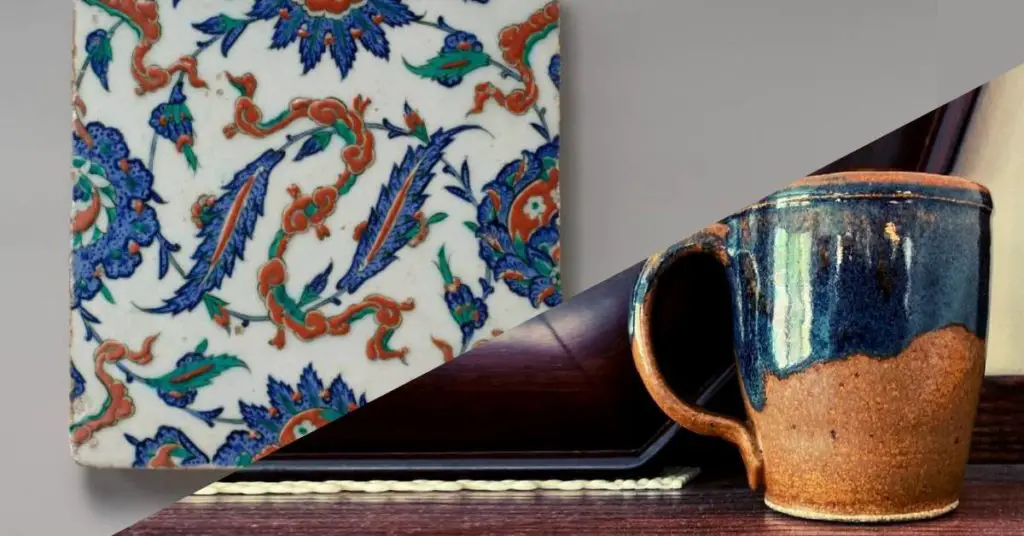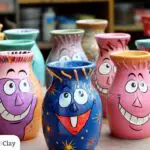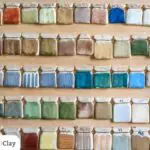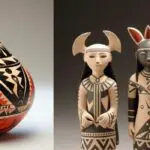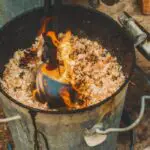Ceramics and pottery. You’ve heard these terms over and over again. But what is the difference between ceramics and pottery? Or is there a difference at all?
If you’re looking for the answer to those questions, then you’ve come to the right place. Today, we’ll clear it up and look at the main difference between these two terms.
What is ceramics?
The word ceramics comes from the Greek word “keramos” and is a general term used to describe a body of works made from non-metallic materials. Specifically, ceramics refers to the outcome of raw materials being fired at high temperatures resulting in durable material. Some of the everday things most folks wouldn’t think to include under the term ceramic are bricks, cement, and diamonds.
What is ceramics made from?
Traditional ceramics are primarily made from natural materials found in the ground like clay and quartz sand. The main attributes of ceramics are…
- Formed through a firing process. Typically, ceramics are fired at high temperatures.
- Durability. An attribute of ceramic objects is that they can withstand everyday use
- Ceramics materials do not decompose after they are fired. You can bury a fired piece and dig it up later to find it intact.
Examples of ceramics
Of course, the most common of ceramic materials is clay which is where a lot of the ceramics vs pottery confusion comes from. But non-pottery items like ceramic tile and concrete structures are also technically a form of ceramics.
The following are a few examples of ceramics. Because it’s more interesting, we’ll focus on the art form side of ceramics.
Figurines
A figurine is a small 3D statue that’s typical in human or animal form. In ancient times, a figurine would often represent a deity. Figurines have been made with many materials including metal and wood. But most common figurines are made from clay.
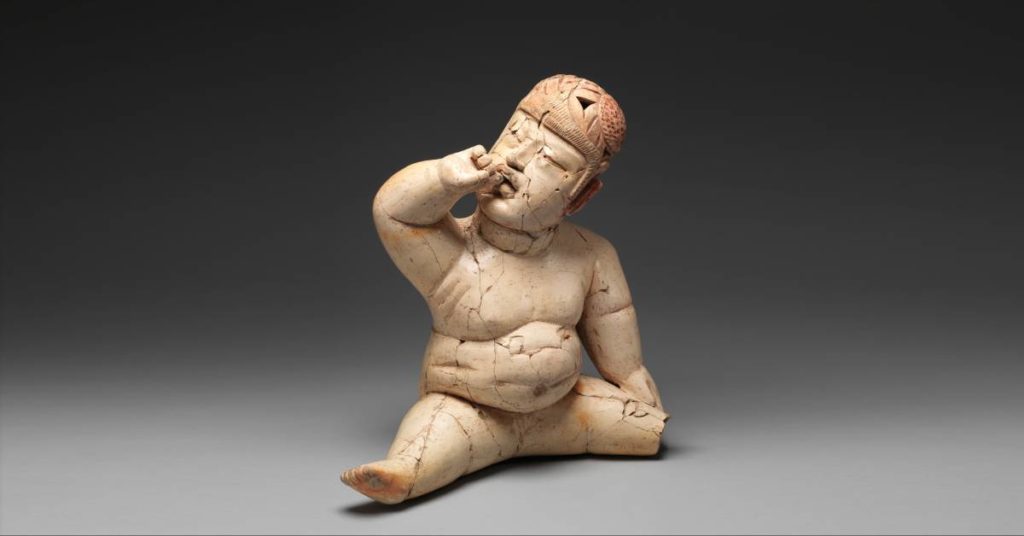
Sculptures
Sculpture is a fantastic form of three-dimensional artwork. Often, the sculpture is made from metal, stone, or marble. But we’re most interested in the pieces made out of clay. Sculptures are typically made by hand or chiseled into their final form using tools.
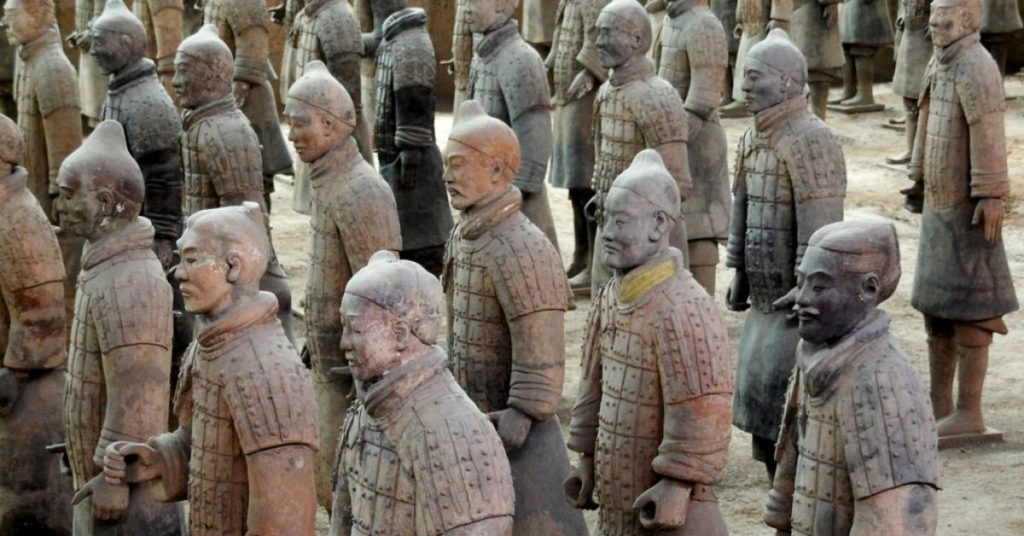
One of the most famous (and astounding) examples of ceramic sculpture would be the terracotta warriors in the Lintong District in Shaanxi, China. There are around 8,000 of these ceramic sculptures standing at about six feet (or two meters) tall.
2D Mosaics and 3D Mosaics
A mosaic uses small parts to create a whole image. Ceramic mosaics are made up of small tiles. Typically, the materials of the tile are glass, stone, and clay. Some really beautiful mosaics have been put together in 2D form. Typically, 2D mosaics are found on the floor or wall art. Here’s a wonderful example from a park in Vietnam.
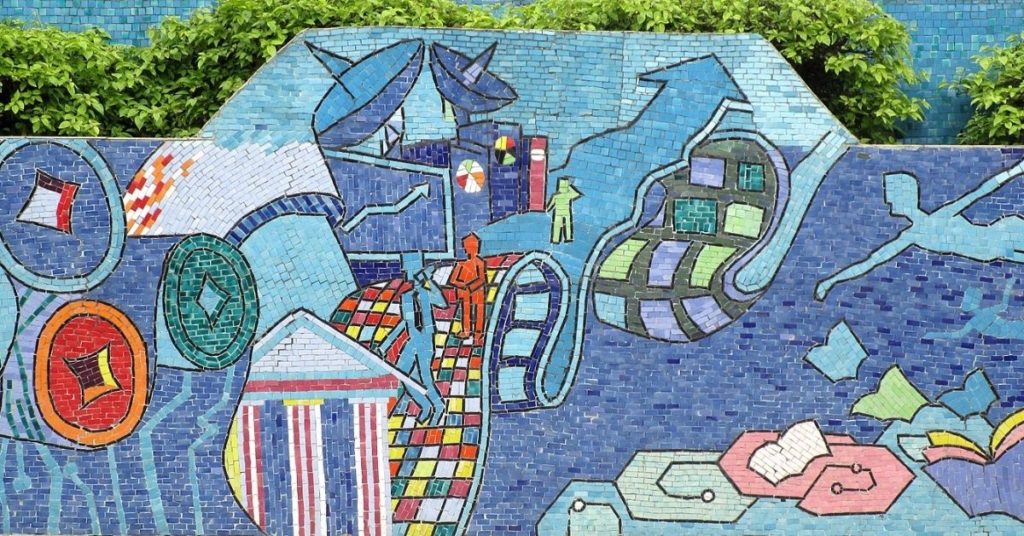
But 2D is only the beginning! There are magnificent examples of mosaic statues and cool art accents that are 3D. Here’s a cool 3D example from Margaret Almon.
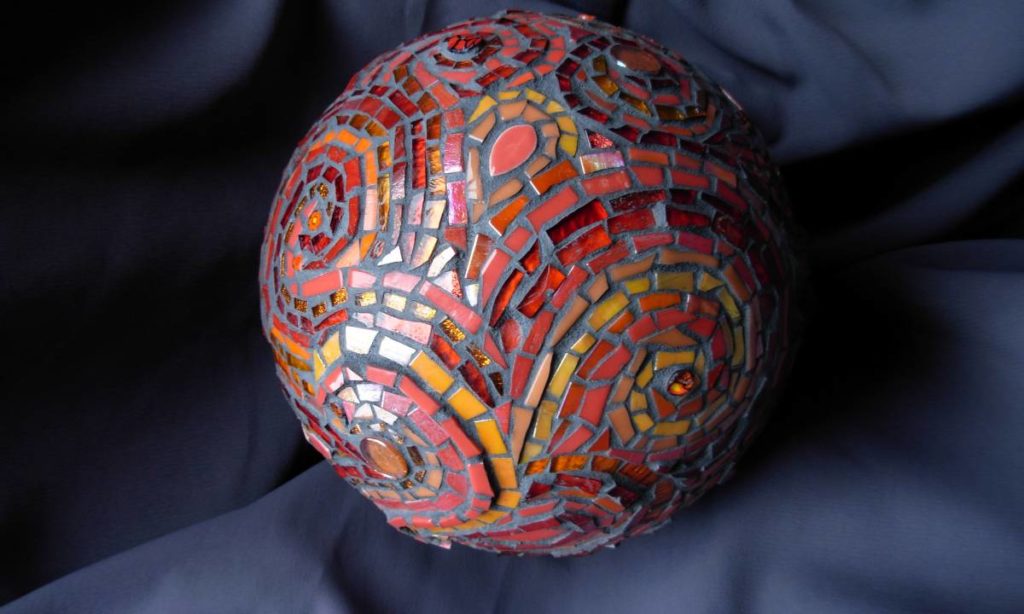
Jewelry
Ceramic jewelry is an old old old art form. A lot of the oldest ceramic pieces archeologists have found are bracelets, necklaces, and earrings – made from either stone or clay.
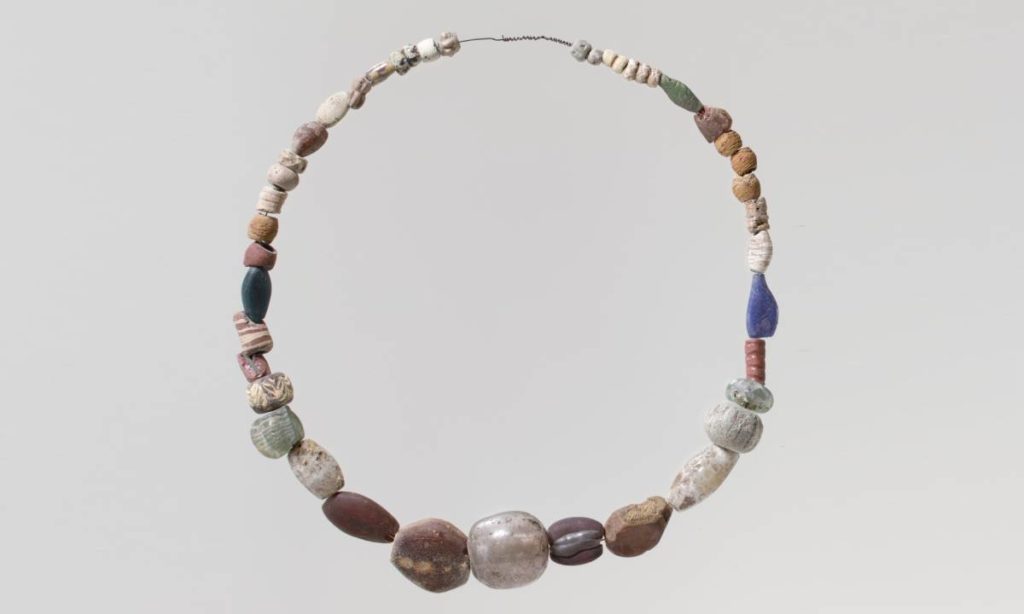
Tile
Ceramic tiles are a celebrated art form. You’ll find gorgeous renditions in palaces from ancient times in the middle east all the way to a family’s suburban home in modern times. Tile is primarily made from clay, but can also be molded from stone and concrete-like substances.
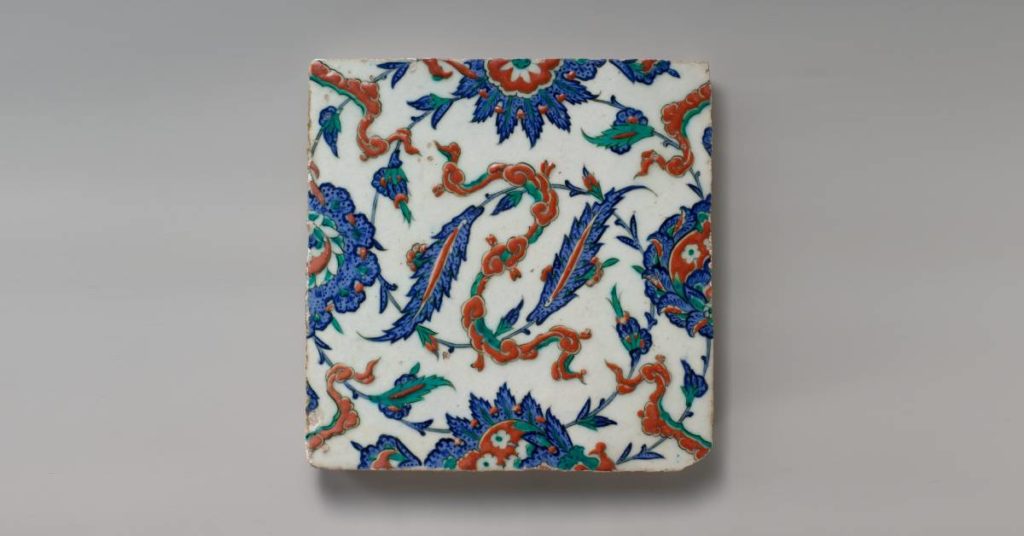
What is Pottery?
Pottery is one of the main types of ceramics. Ceramic pottery is the name for both the process of making vessels and the end result. Pottery items are most commonly made with clay, but can be formed from various ceramic materials like stone. All pottery is fired at high temperatures which makes them durable for use or decoration.
The term pottery comes from an old 13th-century French word “poterie” meaning derives from “potier” (or potter). So pottery quite literally means the art or wares created by the potter.
What is pottery made from?
There are three primary clay bodies used for pottery. The type of clay used for a project often determines what the vessel will be used for (is it food-safe? Is it durable? etc) and how challenging the pot will be to make.
If you’re planning out a new project and you’re not sure which clay to pick, be sure to read our article “How to choose pottery clay for your next project“. We’ll get you set up!
Porcelain pottery
Porcelain wares are often thought of as delicate. I bet you or a family member have fine china and dinnerware that’s made from porcelain. But porcelain is used for far more functional things as well. Often, toilets and bathtubs are made from porcelain.
Porcelain clay is a tougher clay to work with for beginners because it requires a lot of water. But too much water, porcelain has a tendency to become soft and collapse. New potter’s will find this clay difficult to center on a pottery wheel.
Firing helps the porcelain set its shapes permanently and adheres the glaze to the vessel. Firing porcelain normally includes something called vitrify or converting something into a glass-like finish. Porcelain is often fired more than once to get a different style of finish.
Earthenware pottery
Earthenware pottery has a rough, celebrated characteristic in ceramic arts. Commonly, you’ll find utilitarian uses of earthenware like outdoor pottery for plants and gardens.
Earthenware clay was used to make some of the oldest known pottery. The most common earthenware clay is Terracotta (a popular culturally significant piece you might know are the terracotta warriors). It’s a low-fire clay meaning it fires at low temperatures. So it was great for our ancient ancestors who didn’t have high-tech kilns.
Stoneware pottery
Because it’s less porous than other clays, stoneware clay is great for use in cooking, baking, or storing liquids. Stoneware is incredibly durable. It can withstand heat and other elements, so it’s safe in the oven, microwave, and other similar uses. Stoneware requires a higher temperature in the kiln to harden.
Bonus: Ball Clay
Well, I lied… sort of.
There’s a fourth type of clay called ball clay. But it’s not used near as often as the other three clays I just covered primarily because it’s less abundant than it’s clay siblings. In the early days, ball clay was used in floor and wall tiles. But it can be used in any standard ceramic builds – mugs, plates, or similar uses.
If you want to learn more about clay, be sure to check out our article “What Are The 4 Types Of Clay?“
Examples of pottery
The main types of pottery are containers that hold liquid (think mugs and bowls) or for general storage (think jars and jewelry boxes). I’ve broken down the categories to food-safe wares, not food-safe wares, and handbuilding pottery.
Food-Safe Wares
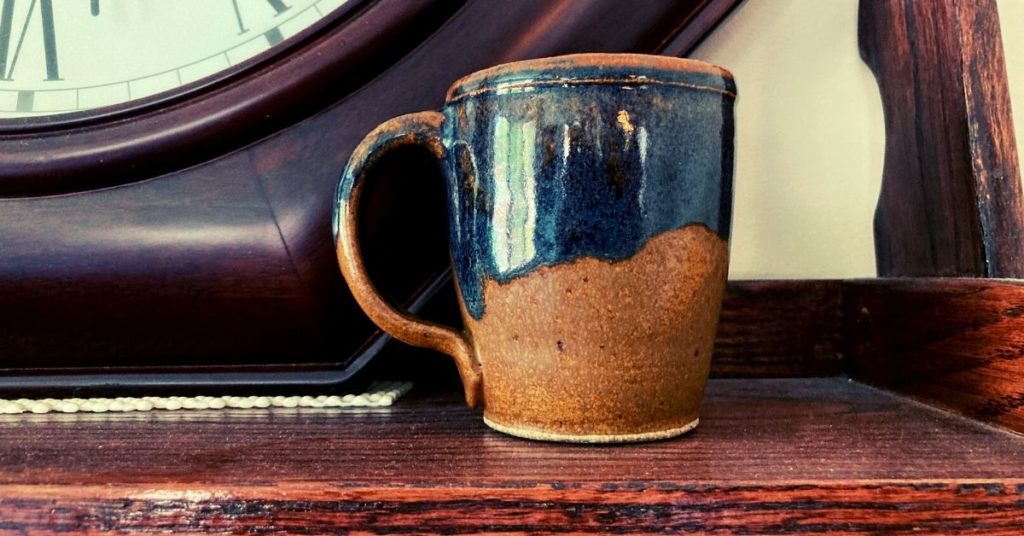
This is probably the first thing you thought of when you saw the word “pottery” on this page. And it’s likely you used some sort of pottery product today: maybe a mug with coffee or a plate with lunch. All of these items are what we call food-safe.
What makes a pottery item food-safe really comes down to a fancy term “vitrification” or the process of a clay body going from porous to non-porous. Vitrification typically happens in the final stages of a pottery project when the potter glazes and fires the piece. Being non-porous prevents heavy metals from leaking into your beverages and food.
Not Food-Safe Wares
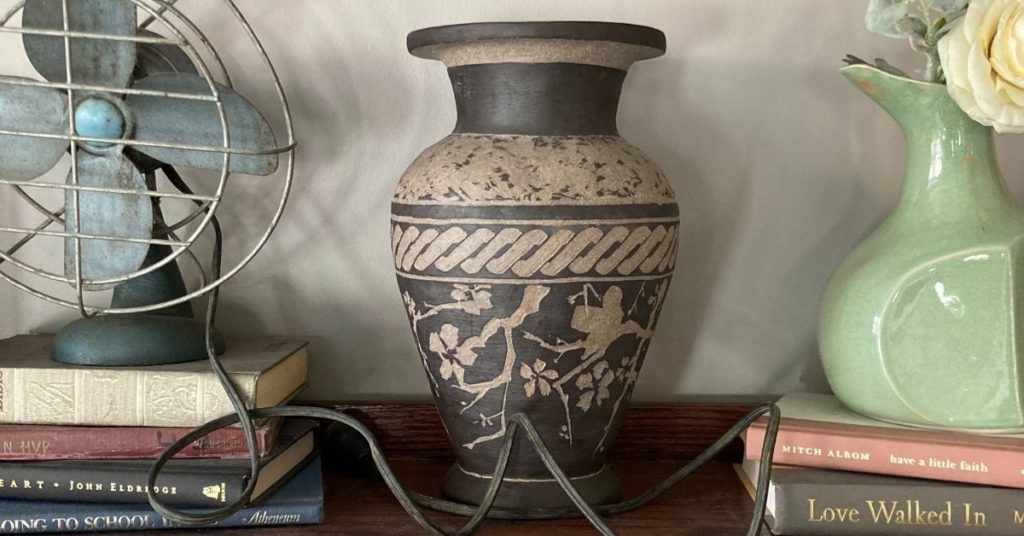
A few examples of wares that aren’t food-safe would be garden planters or decorative pieces.
There’s not a huge difference in the process of making food-safe and not food-safe pottery. The crucial difference is how the piece is fired. Not food-safe wares can remain porous and be fired at lower temperatures.
Handbuilding Pottery
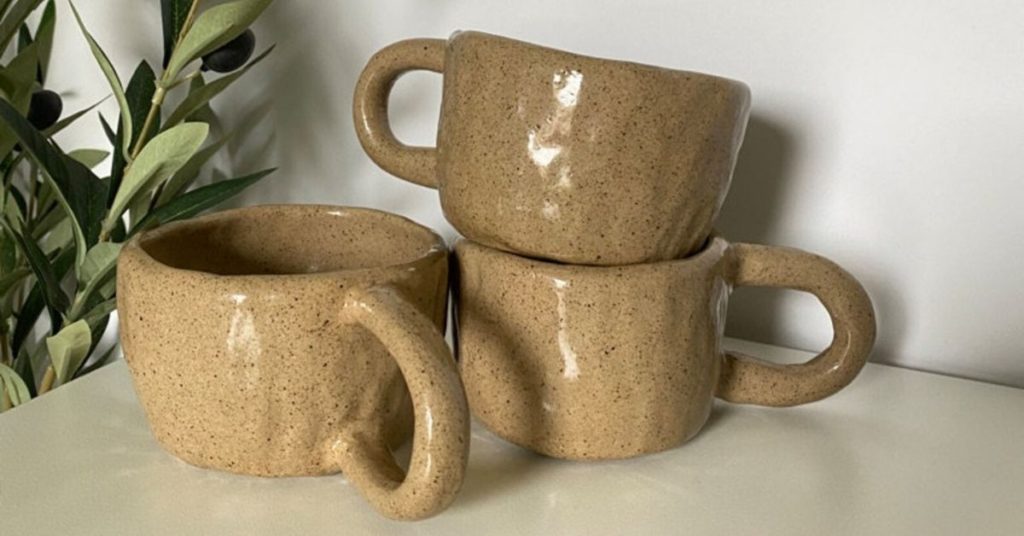
Handbuilding is a technique of making ceramics where you form clay into a pot or vessel with only your hands, simple tools, and a slab of clay. There are 3 main methods of handbuilding: Pinching pots, coil pots, and slab-built pots.
If you want to learn more, be sure to check out our article “Handbuilding Pottery – A Complete Guide“.
The two main ways pottery is made
Commercial Pottery
If your household is anything like our household, you probably have more mugs than you need. Consider the “best [insert family title here]” mug or that one you got from the alumni center of your college. A bunch of those mugs are probably commercially produced. A factory created the vessels with templates and machines in a factory before printing a brand logo or goofy saying on them.
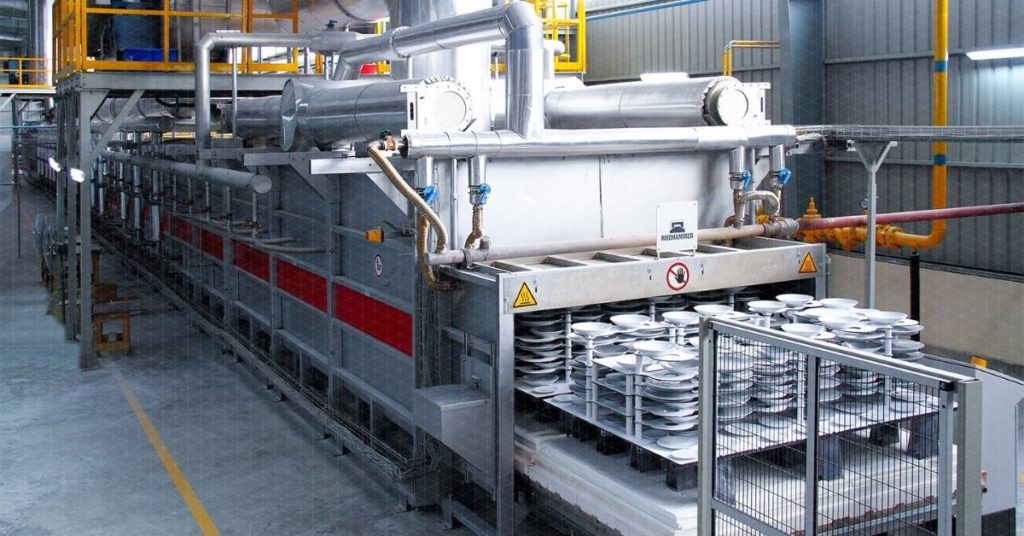
Studio Pottery
Alternatively, studio pottery is handcrafted pottery. An artist sits down to form a unique art piece with hands, potter’s wheel, and tools. Each piece is carefully crafted and has the distinct touch of the potter who made it.
There are some fantastic studio potters who make a lot of amazing stuff. In particular, I really enjoy Florian Gadsby who has this mesmerizing YouTube video on making a batch of mugs:
Conclusion
I’m glad you took the time to explore the ceramic art space a little bit with us today. And now you have the what’s what of ceramics vs pottery. The difference is that pottery is a subcategory of the broad term “ceramics”.
If you have any questions or think I missed something, please let me know! Leave a comment or contact us directly at hello@wheelandclay.com.
More posts we think you’d like
Looking to learn more about pottery? We think that’s great 🙂
Here are a few curated articles that will take your pottery knowledge to another level.

